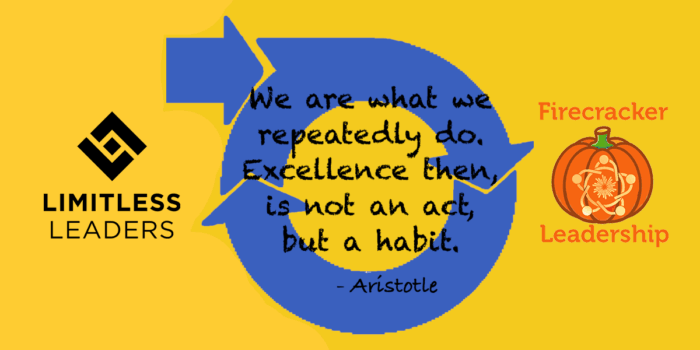My Wednesday Wish for You: Calm Confidence When you step into something new, an unfamiliar role, a daunting project, or…
Are you a great leader? Are you learning anything from your people?
The ability to effectively lead others is a key to success in growing a business. But in the transactional business world gone virtual, we spend the majority of our time treating one another as strangers.
Taking into account all the digital exchanges we have in the course of a workday, what can we as leaders do to humanize our interactions, draw people to us, and build trust?
It comes down to one word: curiosity.
Research has found that curious people are known for having better relationships, and other people are more easily attracted and feel socially closer to individuals who display curiosity.
Curiosity is a strong foundation for developing a growth mindset so you can keep learning. Research published in Harvard Business Review states that people with a higher curiosity quotient (CQ) are more inquisitive and generate more original ideas, and this thinking style leads to higher levels of knowledge acquisition over time.
Organizations will also benefit greatly from hiring future workers displaying curiosity. In one study published in HBR, “the most curious employees sought the most information from co-workers, and the information helped them in their jobs–for instance, it boosted their creativity in addressing customers’ concerns.”
From a leadership standpoint, by being willing to explore and ask questions with curiosity, you’re able to see more clearly the nuances of a challenge and reach better outcomes.
But here’s the thing. If you’re in a bureaucratic environment, too often bureaucracy or the status quo drives us to stop being curious and asking questions, as we think we already have the answers. But by building your curiosity, and allowing others to do the same, we open ourselves up to new ideas that may solve complex problems at a much faster pace.
Reverse mentoring
To take your curiosity quotient to the next level, reverse-mentoring programs are emerging, as companies realize that top-down learning is not always appropriate.
In reverse mentoring, a junior team member enters into a professional friendship with someone more senior, and they exchange skills, knowledge, and understanding. For example, a younger team member might be more tech savvy, so encouraging a pairing with an older colleague or manager with less experience using technology can improve that manager’s ability to connect with potential customers.
This is not a new idea. In the late 1990s, General Electric asked 500 of their top executives to seek out mentors from among new employees.
Reverse mentoring recognizes that there are skills gaps on both sides, and that each person can address their weaknesses with the help of the other’s strengths. A younger team member can pass up-to-date skills and ideas up the corporate ladder, and someone older can become a mentor or coach to that person.
Bill Gates’s take on curiosity
In 2019, Bill Gates spoke to students, parents, and alumni at his high school alma mater in Seattle. One question posed to Gates is especially noteworthy for the next working generation: “What are the skills today’s students need to know to thrive in the world of 2030 and 2040?”
Gates stressed the critical importance of curiosity as a framework for acquiring knowledge. A growth mindset as the foundation and drive to stay curious and keep learning, said Gates, will help prepare future workers for the immense changes that will take place.



